- About MAA
- Membership
- MAA Publications
- Periodicals
- Blogs
- MAA Book Series
- MAA Press (an imprint of the AMS)
- MAA Notes
- MAA Reviews
- Mathematical Communication
- Information for Libraries
- Author Resources
- Advertise with MAA
- Meetings
- Competitions
- Programs
- Communities
- MAA Sections
- SIGMAA
- MAA Connect
- Students
- MAA Awards
- Awards Booklets
- Writing Awards
- Teaching Awards
- Service Awards
- Research Awards
- Lecture Awards
- Putnam Competition Individual and Team Winners
- D. E. Shaw Group AMC 8 Awards & Certificates
- Maryam Mirzakhani AMC 10 A Awards & Certificates
- Two Sigma AMC 10 B Awards & Certificates
- Jane Street AMC 12 A Awards & Certificates
- Akamai AMC 12 B Awards & Certificates
- High School Teachers
- News
You are here
Who's That Mathematician? Paul R. Halmos Collection - Page 41
For more information about Paul R. Halmos (1916-2006) and about the Paul R. Halmos Photograph Collection, please see the introduction to this article on page 1. A new page featuring six photographs will be posted at the start of each week during 2012.
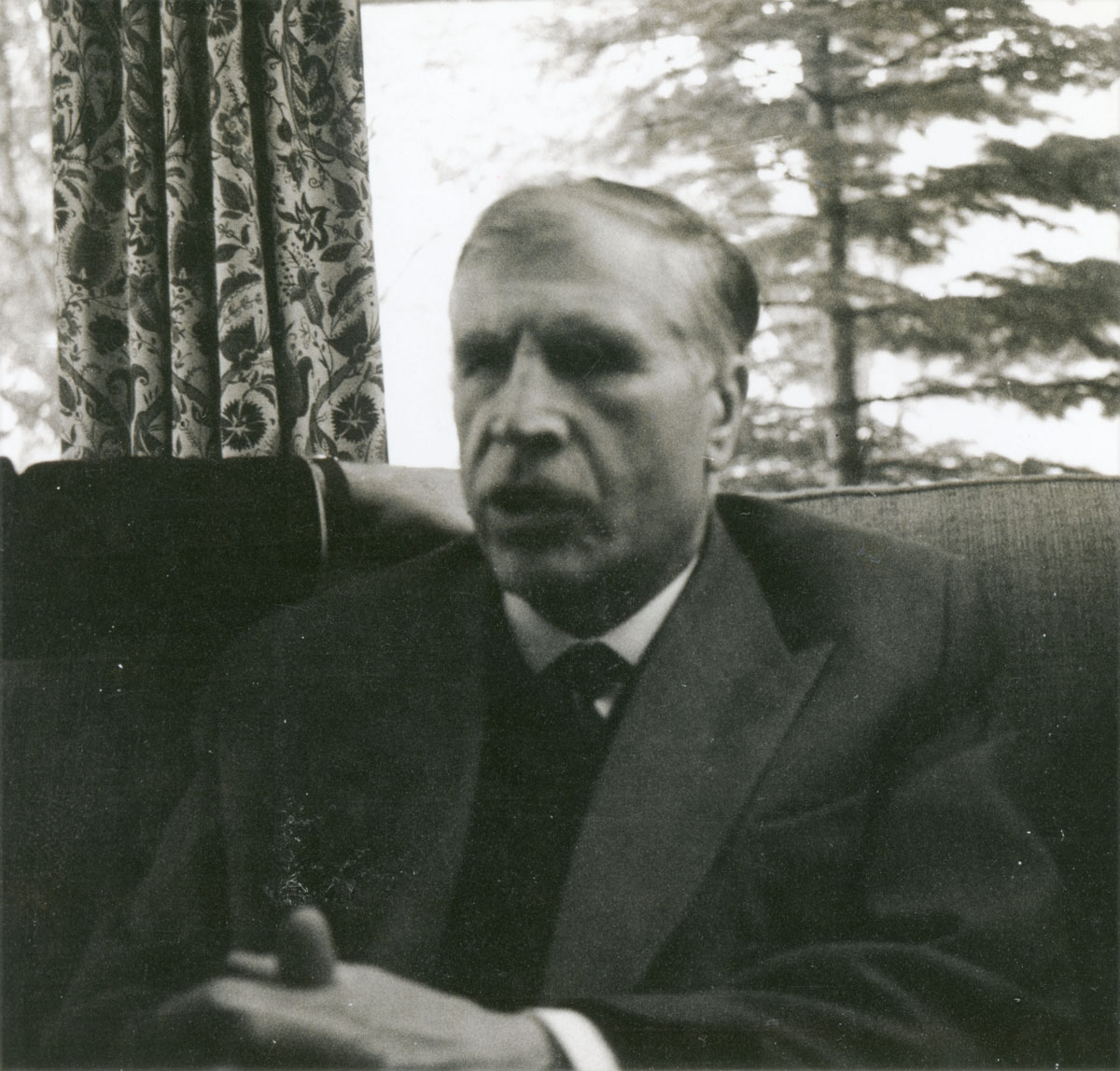
Halmos photographed Russian topologist Lev Pontryagin (1908-1988) on Oct. 8, 1964, in Ann Arbor, Michigan. In his book, I Want to Be a Mathematician: An Automathography (Springer, 1985), Halmos related how he and Pontryagin met again in 1965 when Halmos visited Moscow as part of an exchange program that allowed U.S. and Soviet scientists to visit one another’s countries (pp. 290, 311-312). Another photo of Pontryagin, taken in 1958, appears on page 40 of this collection and you can read more about him there.
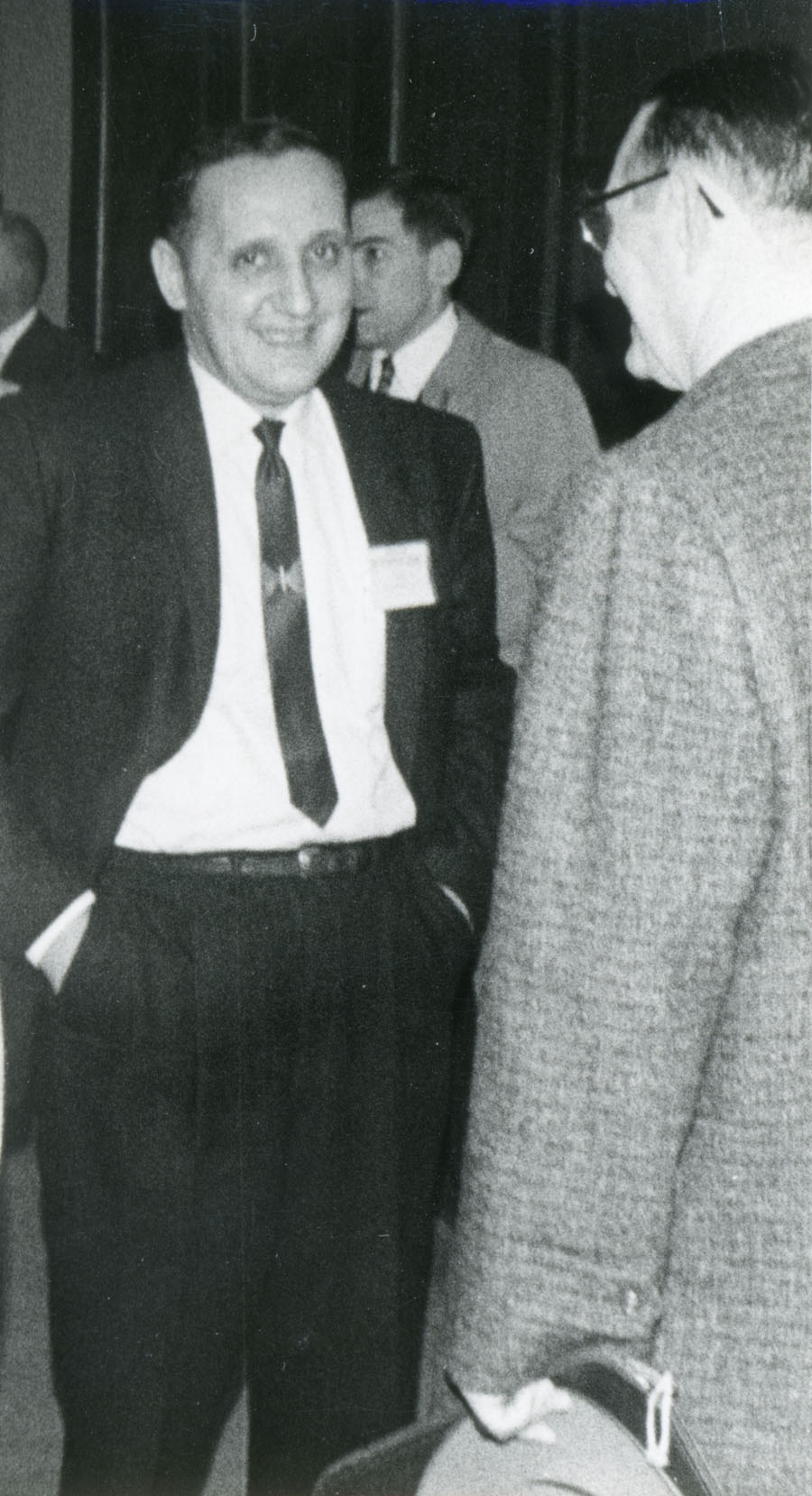
Pasquale Porcelli and W. T. Reid were photographed by Halmos in April of 1961 in Chicago, Illinois, probably at the University of Chicago. Halmos was just ending his tenure as a faculty member at Chicago, and was about to move to the University of Michigan in Ann Arbor.
Pasquale Porcelli (d. 1972) earned his Ph.D. at the University of Texas at Austin in 1952. After serving on the faculty of the Illinois Institute of Technology (IIT), he joined the mathematics faculty at Louisiana State University in Baton Rouge in 1959 and spent the rest of his career there, becoming a Boyd Professor, the highest professorial rank at LSU, in 1965. Porcelli advised at least 19 Ph.D. students during his career. His Ph.D. students at LSU included Ronald Douglas, who is pictured on page 13 of this collection and who has spent his career at the University of Michigan, SUNY Stony Brook, and Texas A & M University, where he is now Distinguished Professor of Mathematics. Douglas recently wrote about his first experience with inquiry-based learning in Porcelli’s calculus classroom at IIT, an experience he says “changed his life” by inspiring him not only to major in math at IIT, but also to follow Porcelli to LSU to obtain his Ph.D. The LSU Mathematics Department honors Porcelli with the Porcelli Lecture Series, the Porcelli Research and Academic Excellence Awards for graduate students, and the Porcelli Scholarships for undergraduates. (Sources: Mathematics Genealogy Project; “Inquiry-Based Learning: Yesterday and Today,” AMS Notices 59:5 (May 2012), pp. 668-9; LSU Mathematics)
William Thomas Reid (1907-1977) earned his Ph.D. in differential equations at the University of Texas at Austin in 1929. He was a faculty member at the University of Chicago from 1929 to 1944 and at Northwestern University in Evanston, Illinois, from 1944 to 1959. In 1959, he became chair of the mathematics department at the University of Iowa and, in 1964, he became Phillips Professor of Mathematics at the University of Oklahoma. His research areas included differential equations, calculus of variations, and optimal control, and he advised at least 26 Ph.D. students during his career. Of the seven Ph.D. students he supervised at the University of Chicago, the first three were co-advised by Gilbert Bliss, and one of these was Herman Goldstine, who became a leader in the fields of numerical analysis and computing and then wrote excellent histories of both fields. The Society for Industrial and Applied Mathematics (SIAM) honors both Reid and his wife, Idalia Reid (d. 2000), with its annual W. T. and Idalia Reid Prize in Mathematics, awarded for research in differential equations and control theory. (Sources: Hardin-Simmons University biography, Archives of American Mathematics biography, SIAM biography, Mathematics Genealogy Project)
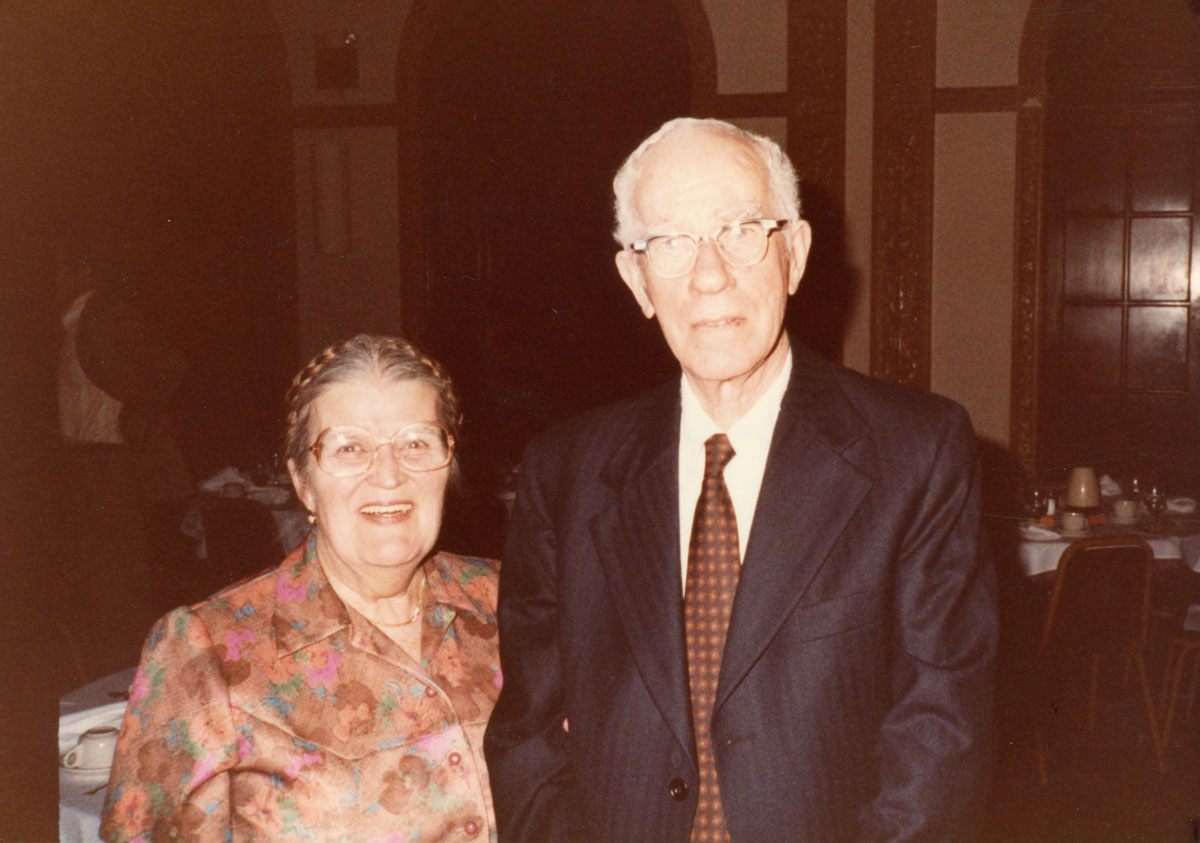
Halmos photographed Cora Lee Beers Price (d. 2004) and G. Baley Price (1905-2006) in April of 1983 at the University of Kansas in Lawrence. Cora Price was a professor of English and Classics at the University of Kansas; her husband Griffith Baley Price was the mathematician in the family. G. B. Price earned his Ph.D. in 1932 from Harvard University with the dissertation, “Double Pendulum and Similar Dynamical Systems,” written under George David Birkhoff. He joined the University of Kansas faculty in 1937 and spent the rest of his career there. As president of the MAA during 1957-58, he helped organize the School Mathematics Study Group in 1958. He also was instrumental in founding and developing such mathematical mainstays as Mathematical Reviews and the Conference Board of the Mathematical Sciences (CBMS) and such MAA fixtures as the Hedrick Lectures and the Committee on the Undergraduate Program in Mathematics (CUPM). In the biography of Price at MAA Presidents, he is described as a person of both ideas and action; that is, as someone who both “conceived what ought to be done” and was “there to see it through.” The University of Kansas honors his memory with the G. Baley Price Award for Excellence in Teaching and the G. Baley Price Professorship in Mathematics. (Sources: University of Kansas obituary, MAA Presidents, Mathematics Genealogy Project)
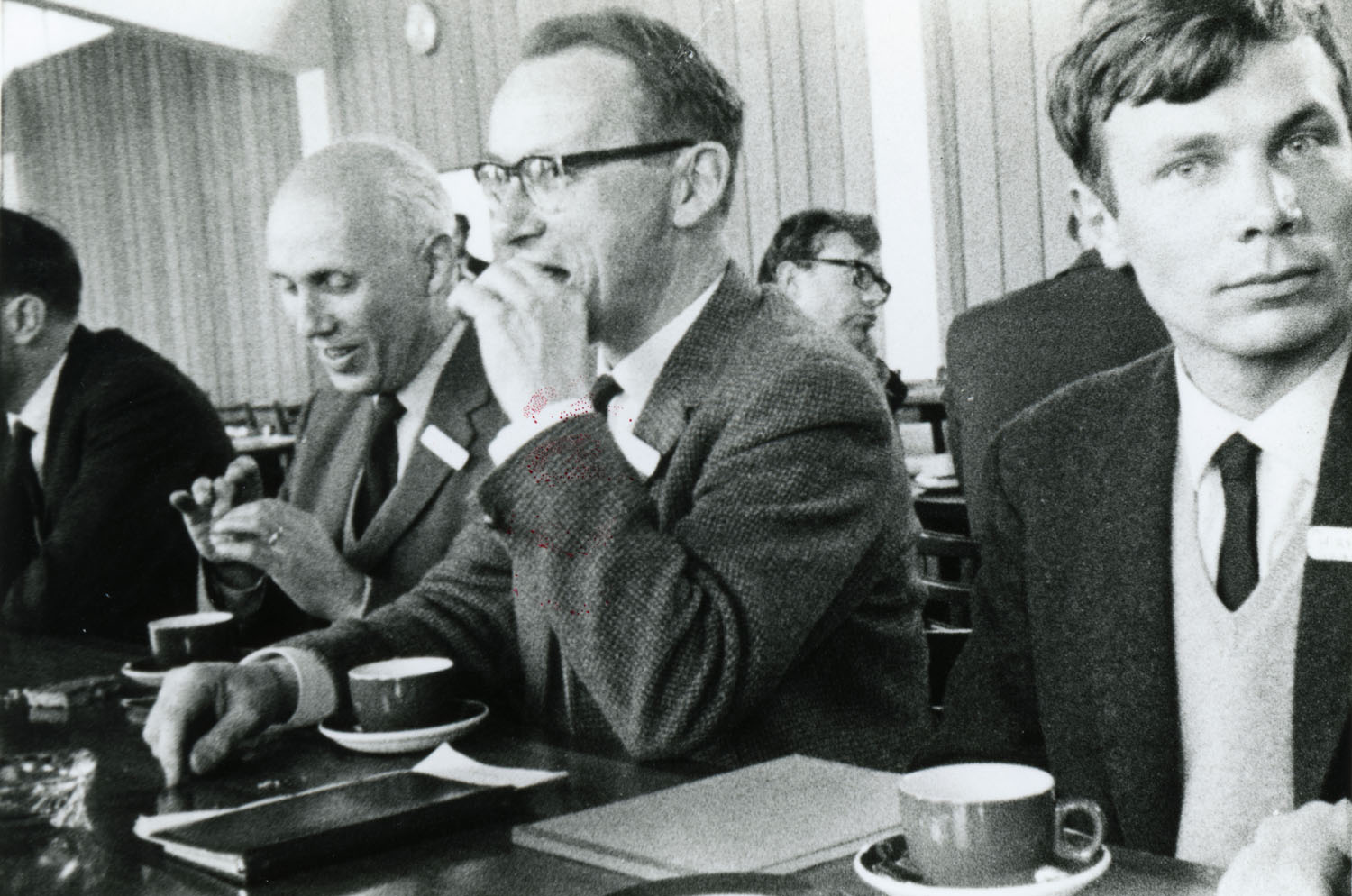
Richard Rado (1906-1989), Robert Rankin (1915-2001), and Hans Reimann, left to right, were photographed by Halmos in April of 1965 at the British Mathematical Colloquium in Dundee, Scotland. Halmos was one of three main speakers at this conference (I Want to Be a Mathematician, Springer, 1985, pp. 290-292). Another photograph of Rankin appears on page 7 of this collection, where you can read more about him.
Born in Berlin, Germany, Richard Rado earned doctoral degrees from the University of Berlin in 1933 and from Cambridge University in 1935. At the University of Berlin, he wrote the dissertation, “Studies on combinatorics,” under advisor Issai Schur and at Cambridge, he wrote the dissertation, “Linear Transformations on Bounded Sequences,” under advisor G. H. Hardy. Although he would write papers in both fields, his research throughout his career was primarily in combinatorics. In 1934, Rado met Paul Erdős, who had earned his Ph.D. in Budapest that year and accepted a fellowship at the University of Manchester in England, and the two began to collaborate. Erdős described the strengths each brought to their collaboration as follows:
I was good at discovering perhaps difficult and interesting special cases and Richard was good at generalising them and putting them in their proper perspective (quoted by O’Connor and Robertson in their MacTutor Archive biography of Rado).
After spending 1935-36 at Cambridge University, Rado was on the mathematics faculty at the University of Sheffield, England, from 1936 to 1947, then at King’s College, London, from 1947 to 1954, and finally at the University of Reading in England from 1954 onward. Much like another couple featured in this collection, Leonard and Reba Gillman (see page 17), Richard Rado and his wife, Luise Zadek Rado (d. 1990), were highly accomplished musicians, he as a pianist and she as a singer, and gave both public and private concerts. (Sources: MacTutor Archive, Mathematics Genealogy Project)
Hans-Martin Reimann earned his Ph.D. in 1969 at the Eidgenössische Technische Hochschule (ETH) in Zürich, Switzerland. After receiving the Diploma in Mathematics from ETH in 1964, he spent the 1964-1965 academic year at the University of Edinburgh studying with Arthur Erdélyi before beginning Ph.D. work at ETH in 1965. He has spent most of his career at the University of Bern, Switzerland, becoming Professor Emeritus in 2006, and, in 2012, his webpage listed his research interests as complex analysis, quasiconformal mappings, Lie groups, symplectic geometry, and wavelets. Recently, Reimann remembered meeting Halmos in Scotland during his year of study there and, in particular, having a cup of coffee with him after one of the conference lectures. He also wrote, "I started growing a beard only in 1972, yet there are hardly any pictures of me without a beard." For some evidence of his claim, see Reimann's photographs in the Oberwolfach Photo Collection and at his Universität Bern webpage. (Sources: Mathematics Genealogy Project, Universität Bern Mathematics, Hans-Martin Reimann (Nov. 2012))
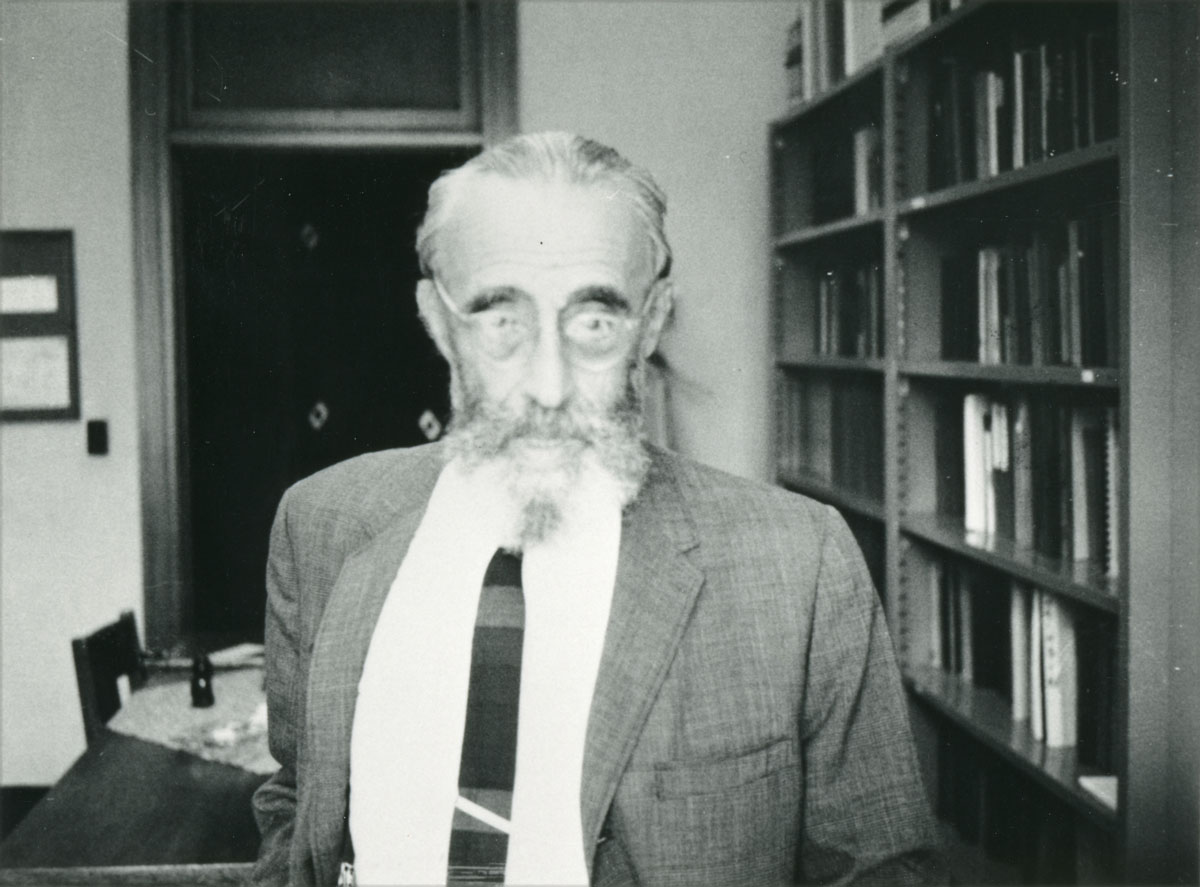
Halmos photographed George Yuri Rainich (1886-1968), in 1964, probably at the University of Michigan in Ann Arbor, where Halmos was a faculty member from 1961 to 1968 and Rainich a faculty member from 1926 onward, becoming Professor Emeritus in 1956. Born in Odessa, Russia, George Yuri Rabinovich earned his doctoral degree (Magister of Pure Mathematics) in 1913 from the University of Kazan, Russia. He remained on the faculty at Kazan until 1917 and was a mathematics professor at the University of Odessa from 1917 to 1922. During 1922 and 1923, he spent several months traveling to the U.S. and obtaining a fellowship at Johns Hopkins University in Baltimore, Maryland, where he became George Yuri Rainich. During the 1920s and certainly by 1926, when he joined the University of Michigan mathematics faculty, his main research focus had become relativity theory. According to his Ph.D. student (1947) and University of Michigan colleague (1947-1973, Emeritus 1973-1979) Kenneth B. Leisenring, Rainich wrote a series of papers during the 1920s in which he “showed that the mathematics of the general theory, which Einstein had made to supply a model for gravitation, also supplied one for electromagnetism” (UM Memorial), published the book Mathematics of Relativity (Wiley) in 1950, and in 1963, after serving as a visiting professor at the University of Notre Dame for several years, returned to UM to conduct a seminar on relativity theory. He advised at least 19 Ph.D. students at the University of Michigan in a wide variety of topics, and he established a fellowship fund at UM intended to promote graduate study in mathematics for African-American and international students.
If you’ve heard one story about Rainich, it probably was that, during a lecture on relativity theory at Columbia University, an audience member asked why he had not cited the work of Rabinovich among that of other leading researchers on the subject. Showing some embarrassment, Rainich answered, “Well, you see, I am Rabinovich.” (Sources: University of Michigan Faculty History Project, Mathematics Genealogy Project)
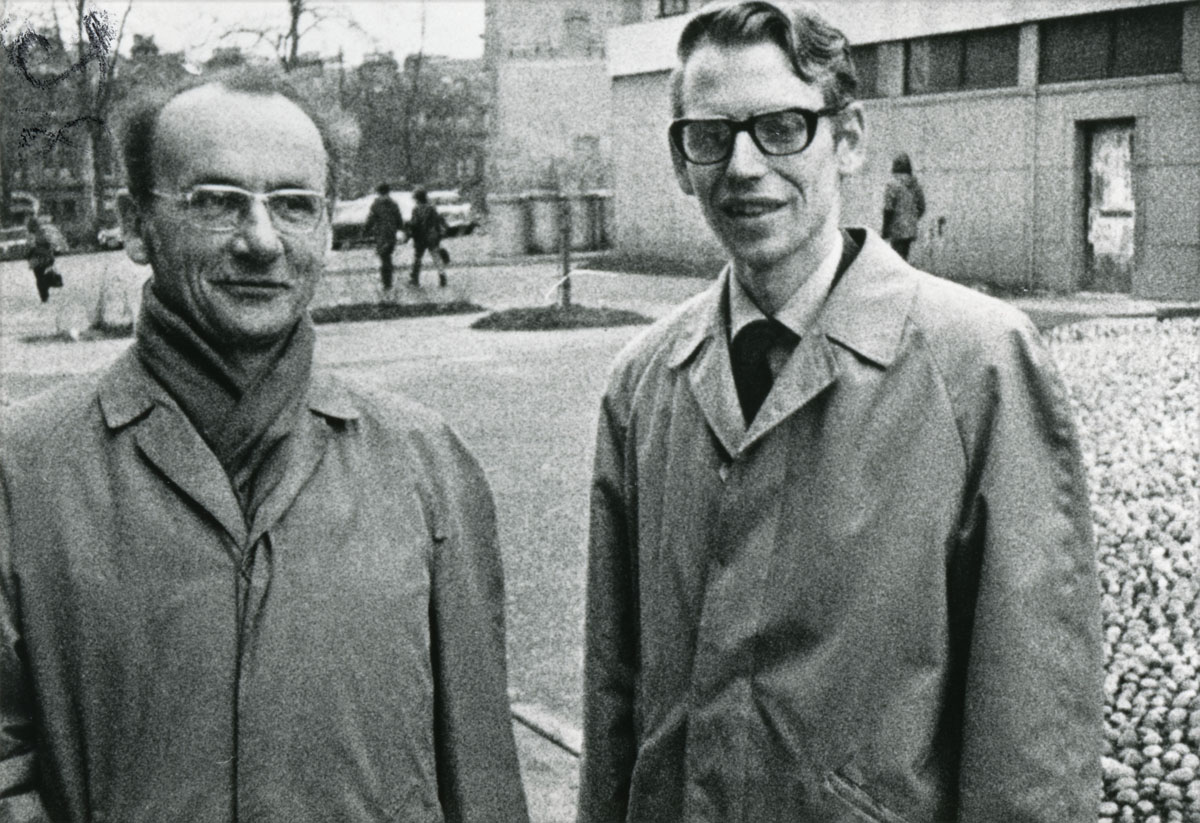
Halmos photographed Robert Rankin (1915-2001), left, and H. Garth Dales in 1973 at the University of Glasgow, Scotland, where Rankin was the longtime Head of Department and Dales was on the faculty. Two more photos of Rankin appear above and on page 7 of this collection, where you can read more about him. H. Garth Dales earned his Ph.D. in functional analysis in 1970 from the University of Newcastle-upon-Tyne, England. From his first academic post at Glasgow (1970-1973), he moved in 1973 to the University of Leeds, England, where he became Professor Emeritus of Pure Mathematics in 2011 and continues to carry out research on Banach algebras. Dales wrote (from his visiting position at the University of California, Berkeley, in November, 2012) that Halmos may have been at Glasgow to give a lecture to the "North British Functional Analysis Seminar." He also shared the following story about the intertwining of his and Rankin's lives:
Robert Rankin was the son of a professor of Old Testament Studies at the University of Edinburgh. He took a first degree and PhD at Cambridge, and then became a Fellow of Clare College, Cambridge. In 1945, after the war, Clare College appointed two Fellows - Rankin in Science and a certain Dr John Parry in Arts - and Rankin and Parry and their families shared a house owned by Clare in Cambridge for a couple of years. Eventually John Parry became a famous professor of Oceanic History at Harvard - and I married one of his daughters, Joanna Clare, who had, as a girl, lived in the Cambridge house with the Rankin family!
(Sources: Mathematics Genealogy Project, University of Leeds Mathematics, Garth Dales (Nov. 2012))
For an introduction to this article and to the Paul R. Halmos Photograph Collection, please see page 1. Watch for a new page featuring six new photographs each week during 2012.
Regarding sources for this page: Information for which a source is not given either appeared on the reverse side of the photograph or was obtained from various sources during 2011-12 by archivist Carol Mead of the Archives of American Mathematics, Dolph Briscoe Center for American History, University of Texas, Austin.
Janet Beery (University of Redlands) and Carol Mead (Archives of American Mathematics, University of Texas, Austin), "Who's That Mathematician? Paul R. Halmos Collection - Page 41," Convergence (January 2012), DOI:10.4169/loci003801




